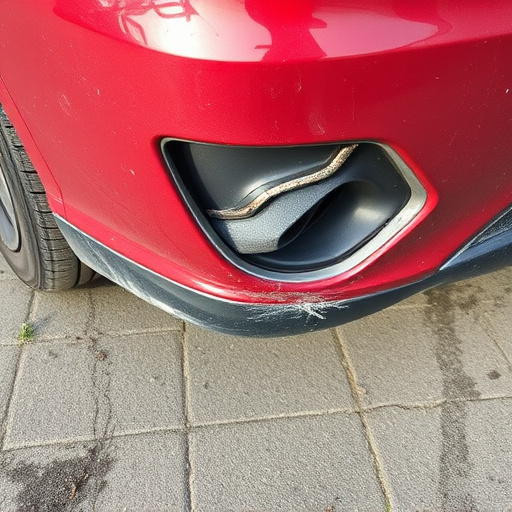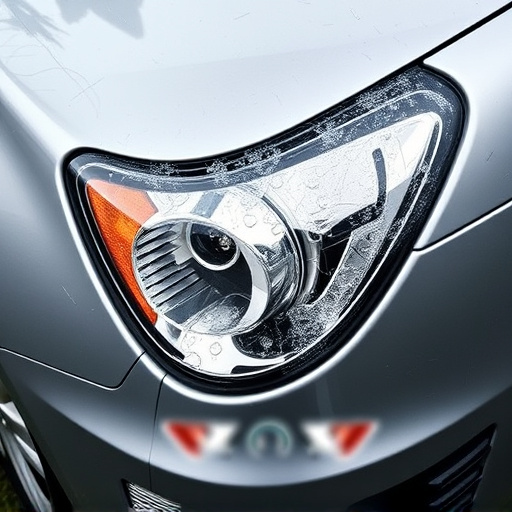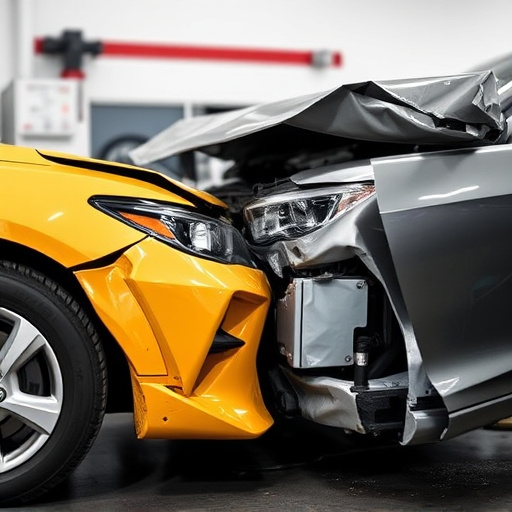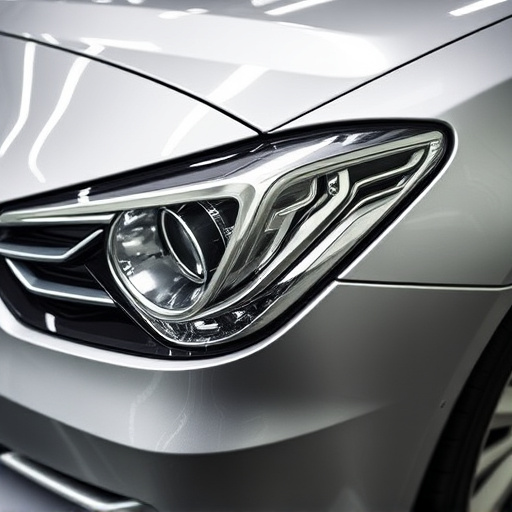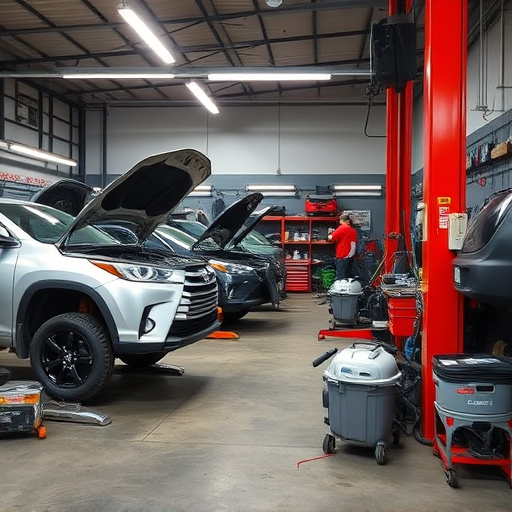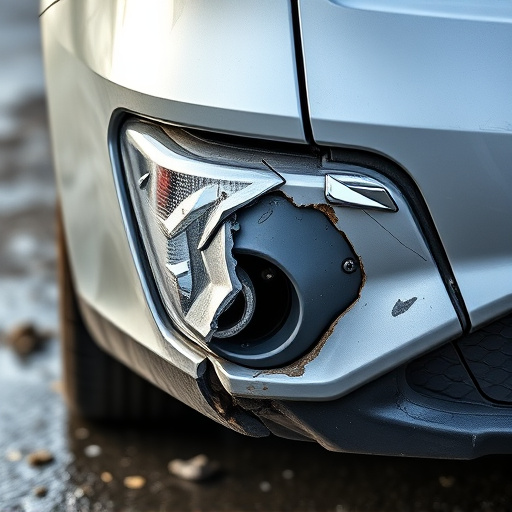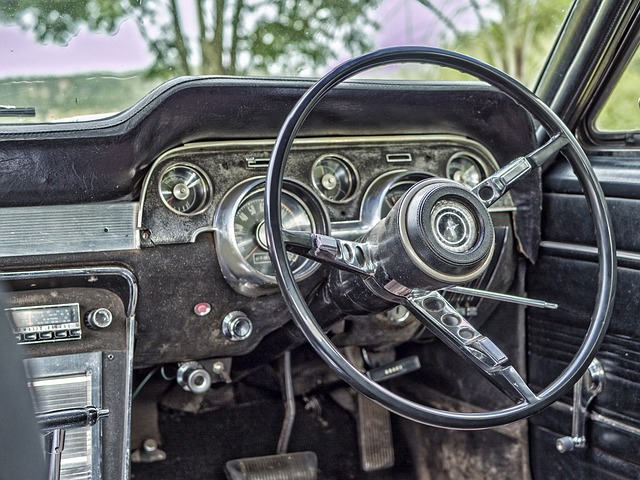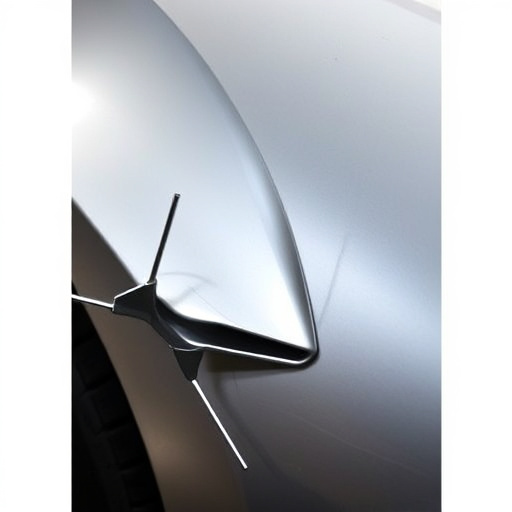LEED Certification is a global standard that verifies a green auto body shop's commitment to minimizing its ecological footprint and maximizing operational efficiency. It involves implementing practices that reduce energy consumption, water usage, waste generation, and harmful chemicals. By embracing strategies like efficient lighting, recycled materials, and water-saving fixtures, these shops contribute to environmental preservation, enhance customer satisfaction, and attract eco-conscious clients. Achieving LEED certification requires a strategic assessment, setting specific goals, implementing eco-friendly practices, focusing on water conservation, proper disposal protocols, and integrating renewable energy sources. This certification offers both environmental and business advantages, promoting sustainable collision repair and contributing to a greener automotive industry.
In the pursuit of sustainability, green auto body shops are turning to LEED (Leadership in Energy and Environmental Design) certification as a benchmark. This article explores how these businesses can achieve this prestigious status, focusing on key steps from material selection to energy efficiency, all tailored for the unique challenges of automotive repair. Understanding LEED’s relevance in the industry is crucial, as it not only enhances environmental stewardship but also fosters trust with eco-conscious customers.
- Understanding LEED Certification and its Relevance to Green Auto Body Shops
- Key Steps Involved in Achieving LEED Certification for a Green Auto Body Shop
- Benefits of LEED Certification for Green Auto Body Shops and the Environment
Understanding LEED Certification and its Relevance to Green Auto Body Shops
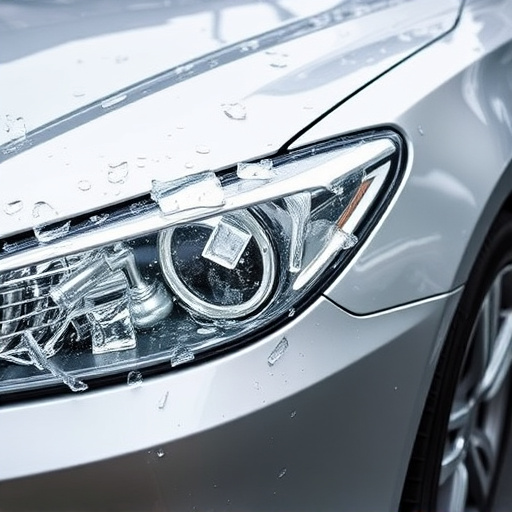
LEED Certification is a globally recognized standard for green building design and construction, focusing on environmental sustainability. For a green auto body shop, achieving this certification goes beyond mere marketing; it’s a commitment to minimizing their ecological footprint while maximizing operational efficiency. This involves adopting practices that reduce energy consumption, water usage, waste generation, and the use of potentially harmful chemicals—all integral aspects of the collision repair and auto detailing processes.
Relevant to these eco-conscious initiatives are strategies like implementing efficient lighting systems, utilizing recycled materials for auto painting and other interior work, and installing water-saving fixtures. By embracing such measures, a green auto body shop not only contributes to environmental preservation but also fosters a healthier workplace environment, enhances customer satisfaction through its commitment to sustainability, and may even attract a niche market of environmentally conscious clients looking for eco-friendly collision repair and auto detailing services.
Key Steps Involved in Achieving LEED Certification for a Green Auto Body Shop

Achieving LEED (Leadership in Energy and Environmental Design) certification for a green auto body shop involves several strategic steps that demonstrate a commitment to sustainability. Initially, conducting a thorough assessment of the facility is crucial. This includes evaluating energy use patterns, identifying areas for waste reduction, and assessing the current state of environmental practices within the collision center and vehicle paint repair operations. Once these factors are understood, the next step is to set specific, measurable goals aligned with LEED criteria.
The journey towards certification often begins with implementing green building materials and practices. This could involve using eco-friendly insulation, sustainable flooring options, and energy-efficient lighting systems. Additionally, incorporating water conservation strategies such as low-flow fixtures and rainwater harvesting systems can significantly reduce the environmental footprint of the shop. As the process unfolds, focusing on efficient vehicle repair services, proper disposal and recycling protocols for automotive materials, and integrating renewable energy sources contributes to a comprehensive green auto body shop experience that resonates with LEED standards.
Benefits of LEED Certification for Green Auto Body Shops and the Environment

LEED Certification is a significant accomplishment for any green auto body shop as it offers numerous environmental and business advantages. By obtaining this certification, shops demonstrate their commitment to sustainability and eco-friendly practices, setting them apart in an increasingly conscious market. The benefits extend far beyond the shop’s walls; they contribute to a greener industry overall.
For the environment, LEED Certification ensures that these auto body shops operate with reduced ecological footprints. Through efficient energy use, water conservation, proper waste management, and the use of sustainable materials, these facilities minimize their impact on local ecosystems. Moreover, promoting green practices in vehicle collision repair and auto dent repair encourages a more sustainable automotive industry, fostering a healthier planet for future generations.
A green auto body shop’s commitment to sustainability doesn’t stop at its eco-friendly practices. Achieving LEED (Leadership in Energy and Environmental Design) certification is a significant milestone, recognizing the business’s dedication to environmental stewardship. By following key steps outlined in this article—integrating efficient energy systems, utilizing sustainable materials, and implementing water conservation measures—green auto body shops can meet the rigorous criteria for LEED certification. This not only benefits the environment but also enhances their reputation as industry leaders in eco-conscious automotive repair.
